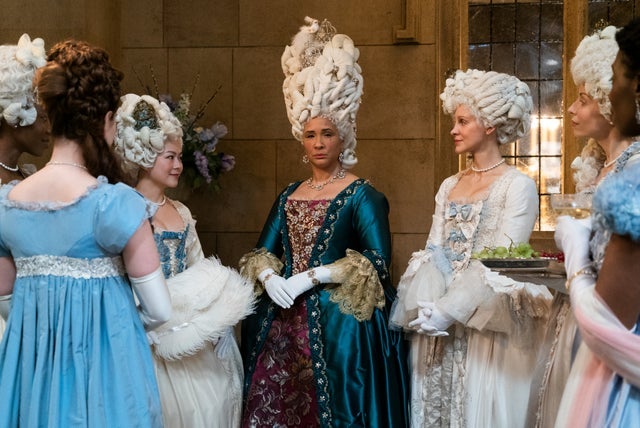How to eat like a Bridgerton: Regency recipes from queen cakes to black cherry water
We’ve fallen in love with their fashion sense, interiors and dancing – but what would the family have eaten? Emily Cope discovers the cakes, stews and tonics enjoyed during the Regency period


Your support helps us to tell the story
From reproductive rights to climate change to Big Tech, The Independent is on the ground when the story is developing. Whether it's investigating the financials of Elon Musk's pro-Trump PAC or producing our latest documentary, 'The A Word', which shines a light on the American women fighting for reproductive rights, we know how important it is to parse out the facts from the messaging.
At such a critical moment in US history, we need reporters on the ground. Your donation allows us to keep sending journalists to speak to both sides of the story.
The Independent is trusted by Americans across the entire political spectrum. And unlike many other quality news outlets, we choose not to lock Americans out of our reporting and analysis with paywalls. We believe quality journalism should be available to everyone, paid for by those who can afford it.
Your support makes all the difference.Netflix’s period drama Bridgerton served up some gloriously escapist lockdown viewing over Christmas.
With sumptuous costumes, opulent furnishings and some scandalous gossip thrown in for good measure, the series had all the ingredients of the perfect binge session.
It subsequently sparked a trend for “Regencycore” fashion and delivered us a new inanimate object to lust over, in the form of the Duke of Hastings’ spoon.
The drama of Bridgerton takes place amidst a backdrop of lavish dinners and dances. As the streaming service confirms that the show will return for a second series, we thought it high time we dipped that spoon into some of the show’s culinary offerings.
In the 19th century, dinner parties were the height of socialising, and were therefore often a long affair with many different dishes served in one sitting. According to the Jane Austen Centre, attendees could expect to be offered "soup, meat, game, pickles, jellies, vegetables, custards, puddings- anywhere from five to twenty-five dishes depending on the grandeur of the occasion”.

But despite wealthy families employing a whole host of servants to do the majority of the cooking, well-off women were still expected to know their way around a kitchen.
In Elizabeth Price’s cookbook, The New Universal and Complete Confectioner, which was published in 1800, she writes: “Every young lady ought to know both how to make all kind of confectionary and dress out a dessert.”
We tucked in to Price’s recipes to find out exactly what sort of dishes one might be whipping up in the 1800s, so we can finesse our skills in time for series two – or simply return for a second helping of series one.
Here’s how you can recreate some common dishes from the Regency period, should Lady Whistledown come for tea (not including a tonic used to cure “hysterical women” – yes, really).
Little Queen Cakes
These currant-filled treats were popular in England and America in the 18th and 19th centuries, and are similar to modern day fairy cakes.
450g flour
700g butter
700g sugar
3 egg yolks
3 tsp rose water
4 tsp sherry
2 nutmegs
450g currants
Beat the butter with your hands until it turns thick and then slowly add the sugar and flour.
Finely grate the nutmegs and add to the batter, along with the egg yolks, sherry and rose water, and make sure to stir well.
Finally add the currents and divide into separate cases on a baking tray.
Make sure your oven has been pre-heated to a medium heat, and then bake for 15 minutes.
Kidney soup
According to True Politeness: A Handbook of Etiquette for Ladies, published in 1847, it was usual for dinner parties during the Regency period to “commence with soup, which [you] never refuse; if you do not eat, you can toy with it until it is followed by fish.
“Soup must be eaten from the side, not the point of the spoon; and in eating it, be careful not to make a noise, by strongly inhaling the breath: this habit is excessively vulgar; you cannot eat too quietly.”
More of a stew than a soup, this recipe was featured in The Bell Inn recipe book published during the 19th century.
500g Beef
1 kidney (beef or pork)
4 turnips
2 carrots
1 head of celery
4 potatoes
Lemon peel
Remove all fat from the kidney, wash, dry and cut into slices, then cut up the beef into chunks.
Peel and chop potatoes, then bring to boil while lightly frying the kidney and beef in a separate pan.
Chop the turnips, carrots and celery and add to the mixture, before adding the meat and a touch of grated lemon peel.
Leave on a gentle heat for an hour before serving.
Black cherry water
According to Elizabeth Price, this concoction is a refreshing non-alcoholic drink for adults and also makes “an excellent water for children”.
2kg blackberries
1 handful rosemary tops
1 handful of sweet marjoram
1 handful spearmint
1 handful angelica
1 handful balm
1 handful marigold flowers
450g dried violets
450g aniseed
450g sweet fennel seeds
Take the cherries and bruise them softly, before adding to the rosemary tops, sweet marjoram, spearmint, angelica, balm and marigold flowers.
Chop the violets, aniseeds and sweet fennel seeds and then mix together and stir.
Distil in a cold still, then add three to four spoonfuls to a glass of water and serve.
To purchase Elizabeth Price’s recipe book and many more like it visit Shapero.com

Join our commenting forum
Join thought-provoking conversations, follow other Independent readers and see their replies
Comments